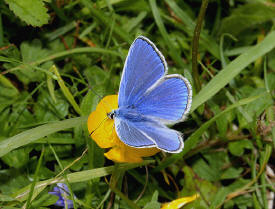According to popular belief, the word butterfly is derived from the expression ‘butter-coloured fly’. This term may have been applied to the Brimstone, one of Britain’s most well known butterflies and often the first species to be seen when they awake from hibernation in the Spring.
However there might be a better explanation. In Old English the word was spelt ‘butterfloege’ and in Old Dutch and German it was ‘botervleig’ and ‘butterfliege’ respectively. These terms all translate as ‘butter fly’.
Another German name ‘milchdieb’ means ‘milk-thief’ and may refer to the habit that butterflies once had of being attracted to buttermilk. In eastern Europe where ancient farming methods have not died out, butterflies are still sometimes attracted to buttermilk being hand-churned in farmyards.
 Brimstone butterfly – the original “butter-coloured fly” ? – Adrian Hoskins
Brimstone butterfly – the original “butter-coloured fly” ? – Adrian Hoskins
Elsewhere in the world, butterflies are known by other names. In Spain and Latin America they are called mariposas. In Portugal they are borbolettas. To the French they are papillons. In Russia they are babochka and in Armenia teeternig.
My favourites however are the Romanian flutturi ( because butterflies are fluttery! ), and the Nigerian olookolombooka ( oh look – a lombooka! ).
How can you tell a butterfly from a moth ?
All butterflies and moths belong to the order Lepidoptera. This is split into 34 superfamilies, each with particular characteristics. 95% of the species in these superfamilies are nocturnal insects, and are commonly called moths.
Positioned ( in evolutionary and systematic terms ) somewhere in the middle of all these moths are two particular superfamilies – the Hesperioidea and Papilionoidea. The Hesperioidea comprises of a single family Hesperiidae. Its members are called Skippers, and are generally thought of as being butterflies. The Papilionoidea comprises of 6 families. Five of these – the Papilionidae, Lycaenidae, Riodinidae, Pieridae and Nymphalidae have always been regarded as butterflies. In 2011 scientists decided as a result of molecular analysis that members of the moth family Hedylidae had more in common with the traditional butterfly families than with other moths.
Consequently the Hedylidae were transferred to the Papilionoidea, and are now regarded as butterflies! In terms of systematics the Papilionoidea are positioned between the moth superfamilies Geometroidea and Drepanoidea.”Moths” are usually thought of as being drab in colour and nocturnal in habit, but there are plenty of very colourful day-flying moths, e.g. Urania moths ( Uraniidae ), Burnets ( Zygaenidae ) and Tiger moths ( Arctiidae ).
Conversely while it’s true that the great majority of butterflies are colourful sun loving creatures, many tropical species such as Opsiphanes Owlet butterflies and Melanitis Evening Browns are dull in colour and only fly between dusk and dawn.
It is often incorrectly stated that all butterflies have clubbed antennae, thereby distinguishing them from moths, which in most cases have tapered or pectinate antennae. It’s true that butterflies in the families Papilionidae, Lycaenidae, Riodinidae, Nymphalidae and Pieridae have antennae with a club or swelling at the tip, but so do moths in the families Zygaenidae, Castniidae and Sematuridae.
The nocturnal Hedylidae are anatomically somewhere between butterflies and moths, with sombre wings and thin tapered antennae.
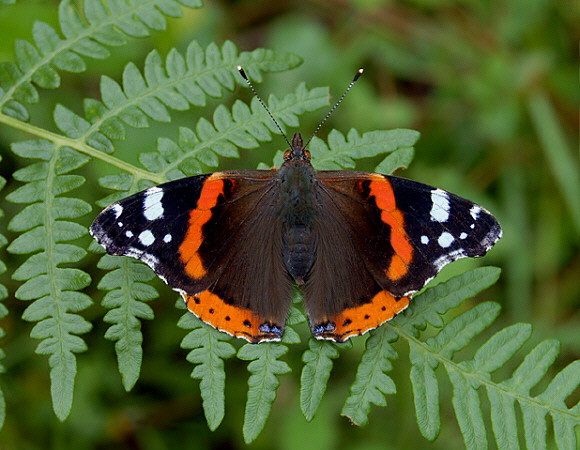 The antennae of most butterflies have a swollen or clubbed tip. – Adrian Hoskins
The antennae of most butterflies have a swollen or clubbed tip. – Adrian Hoskins
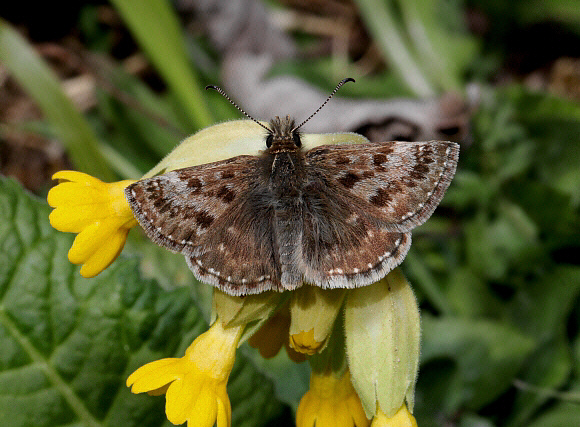 The antennae of skippers ( Hesperioidea ), such as Erynnis tages have hooked tips, as do those of moths from the families Zygaenidae, Sematuridae and Castniidae – Adrian Hoskins
The antennae of skippers ( Hesperioidea ), such as Erynnis tages have hooked tips, as do those of moths from the families Zygaenidae, Sematuridae and Castniidae – Adrian Hoskins
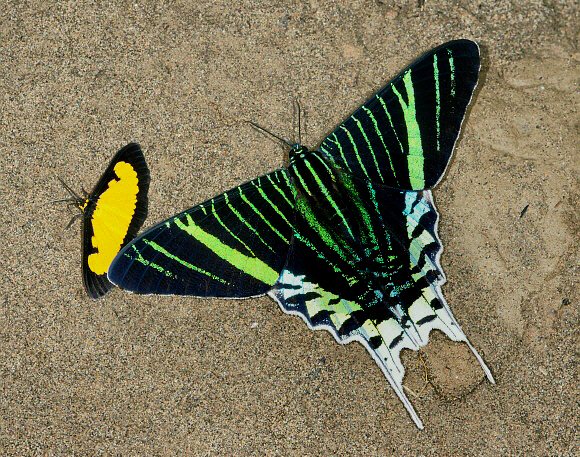 A pair of day-flying moths from Peru : Urania leilus, which could easily be mistaken for a swallowtail butterfly; and the pretty yellow and black Xanthiris flaveolata – Adrian Hoskins
A pair of day-flying moths from Peru : Urania leilus, which could easily be mistaken for a swallowtail butterfly; and the pretty yellow and black Xanthiris flaveolata – Adrian Hoskins
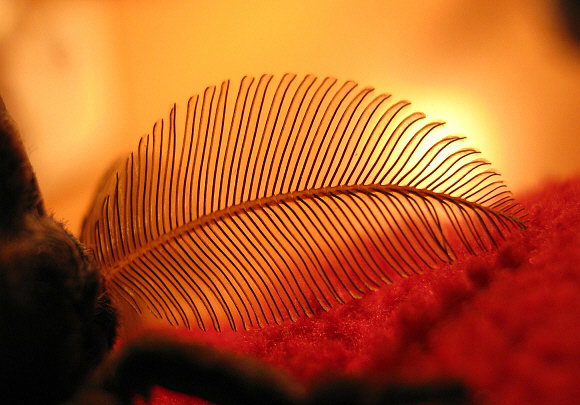 Most moths have narrow tapered antennae, but the males of Saturniidae have feathery plumes that are used to detect and home in on female pheromones – Emily Halsey
Most moths have narrow tapered antennae, but the males of Saturniidae have feathery plumes that are used to detect and home in on female pheromones – Emily Halsey
The fore and hind-wings of all moths are physically linked in flight by a wing-coupling bristle known as a frenulum. This is absent from the wings of butterflies, with the exception of a single Australian species the Regent Skipper Euschemon rafflesia, which has a frenulum in males but not in females.
Members of the moth family Hedylidae are considered to be living ancestors of modern butterflies, as they have a remarkable number of common characteristics.
How do scientists describe and name new species ?
When someone thinks they have discovered a ‘new’ species, they have to send a sample specimen to a taxonomist for analysis. By examining the structure of the wings, legs and antennae the family and subfamily can quickly be determined. Next, examination of the layout of the wing veins makes it possible to ascertain whether the insect belongs to an existing genus. If the venation is unique, a new genus has to be invented as a “container” for the species.
Sometimes a new species is so closely related to a known species, that the only way to distinguish them is by dissecting and comparing their genitalia. Other methods are also employed, including microscopic examination of wing scales, and DNA analysis.
If the butterfly does turn out to be a new species, the taxonomist then creates a Latinised name for it, and publishes the description and name in a recognised scientific journal.
The origin of scientific names varies enormously. Some species are named after Greek gods, some get their name from the place where the butterfly was discovered, or are named in honour of some eminent entomologist. It is considered unethical for people to name a species after themselves, but there is at least one instance where someone got away with it – a scarab beetle named Cartwrightia cartwrighti CARTWRIGHT.
Names are often descriptive of the caterpillar’s foodplant : the Orange tip Anthocharis cardamines gets its name from the plant garlic mustard Cardamines pratensis. Equally often names refer to the colour or pattern of the butterfly – the Clouded Yellow’s species name crocea means “deep yellow”, while the Eyed Hawkmoth’s name S. ocellatus means “eye” and refers to the eye-like markings on the moth’s hindwings.
The Charismatic Metalmark
Taxonomists are not usually renowned for having a great sense of humour, but amongst their more hilarious moments they have managed to provide us with a few amusing scientific names. Hence we have a metalmark from Colombia, named by Hall and Harvey in 2002 as Charis matic ! It has since been renamed rather less attractively as Detritivora matic. The new genus name refers to the fact that the caterpillars feed on decaying leaves and other detritus on the forest floor.
The World’s dullest Skipper ?
Sometimes it can be difficult to think up names for some of the more mundane looking species, particularly for the hundreds of near-identical dull brown skipper species found in the neotropics. In 1997 the taxonomist Austin was apparently so unimpressed with his latest discovery that he gave a ‘new<‘ Mexican species the unfortunate name Inglorius mediocris, which needs little translation !
Below is it’s official scientific description :
| Type species: Inglorius mediocris Austin, new species Description. Palpi slender, third segment straight, protruding well beyond second segment, about equal to length of dorsal edge of second segment; antennae long, extending beyond end of forewing discal cell, nearly 60% length of forewing costa, black with pale ochreous beneath distad and below club; club just over 1/4 (28%) antennal length, bent to apiculus at thickest part, apiculus length about 2x club width, nudum grey, of 12 segments (3 on club, 9 on apiculus); forewing discal cell slightly produced, 75% length of anal margin, origin of vein CuA2 nearer to CuA, than to wing base, hindwing discal cell just over 1/2 wing width; mid tibiae with four fine spines on inner surface and single pair of spurs, hind tibiae with two pairs of spurs; forewing produced with slight concavity between CuA! and 2A; hindwing convex anteriorly, somewhat concave between CuAj and 2A; no apparent secondary sexual characters. Male genitalia with short tegumen; uncus longer than tegumen, undivided, and hood-like over gnathos; gnathos as long as uncus, divided, extending laterad of uncus in dorsal view and as rectangular flaps mesad in ventral view; vinculum sinuate; saccus short; valva very long, ampulla/costa long and sloping somewhat downward caudad, harpe long, roughly triangular ending in an inward turned point caudad, dorsal margin undulate, weakly serrate cephalad; aedeagus tubular (anterior portion missing), caudal end expanded terminally in lateral view, no apparent cornutus. |
See the Taxonomy pages to read more about classification, or click here for a further selection of fascinating scientific names.
How long do butterflies & moths live ?
It varies considerably according to species. The average lifespan of an adult butterfly is about 2 weeks, but some species ( e.g. Heliconius erato and Taygetis mermeria from South America, and Gonepteryx rhamni from Europe ) can live for at least 11 months.
The whole lifecycle from egg to adult takes about 3 weeks to complete in many tropical species. In temperate regions however there are usually only 1 or 2 generations a year, while in the sub-arctic tundra several species take 2 full years to complete their lifecycles.
The longest-lived species of all is a moth by the name of Gynaephora groenlandica, which lives on Ellesmere Island in the Canadian arctic. The adult moth, a member of the family Lymantriidae, lives for only a few days, but it has been estimated ( Kukal & Kevan, 1987 ) that its caterpillar, known as the Arctic Woolly Bear, takes an amazing 14 years to reach full growth – although later research by Morewood & Ring suggests that the lifecycle can sometimes be completed in only 7 years.
Either way Gynaephora groenlandica and it’s close relatives rossi, ginghaiensis, relictus, selenitica menhuanensis are almost certainly the longest-lived species of Lepidoptera on Earth. Temperatures in their Arctic habitats can drop as low as minus 60� C, forcing the caterpillars to spend 10 or 11 months in hibernation, frozen solid.
Only for a few short weeks in June and July is it warm enough for them to defrost, allowing them to feed and grow. In their final year they pupate in a thin silk cocoon. The adult moths emerge a few days later, find mates, lay their eggs and die.
How many butterfly species are there in the world ?
A study in 1968 concluded that the 920,000 species of insect then known to exist accounted for 85% of all known animal species on Earth. The insects already known at that time included no less than 300,000 species of Coleoptera ( beetles ), 90,000 Diptera ( flies ), 108,000 Hymenoptera ( bees, wasps and ants ), and 113,000 Lepidoptera ( butterflies & moths ).Since then the number of known butterflies and moths has increased dramatically.
This is partly because vast areas of formerly inaccessible rainforest have now been surveyed, and new species discovered. Another reason is that advances in taxonomy, phylogenetics and cladistics have led to many taxa that were formerly considered to be subspecies, being “elevated” to full species status.
In “Butterflies of Mexico & USA” ( Scott, 1992 ) a census estimated that there were approx 14750 butterfly species ( including skippers ) worldwide. In 2007 Hoskins collated data from a number of sources and produced a World Butterfly Census which enumerates 17657 currently known species.
The true total will never be known, as many species will become extinct before they are discovered, but is likely to be in the region of 18,000 – 21,000 species.
Why are butterflies so diverse in the tropics ?
There are several contributing factors. Firstly there are a great many more biological and climatic niches to be occupied in the tropics. In Peru for example, where there are more butterfly species than anywhere else on Earth, there are deserts, paramo grasslands, rainforests and cloudforests. Each of these habitats contains many sub-habitats, each with its own fauna, e.g. a rainforest will have an entirely different range of species in the canopy, sub-canopy and understorey.
Secondly, during ice ages, it is only the tropical and sub-tropical regions which are able to support butterflies, so these become refugiae into which species from elsewhere contract.
The butterflies that normally live in temperate regions either become extinct or migrate and survive on remote mountains in the tropics where conditions are suitable for them. When the Earth warms up again, and temperate regions once again become habitable by butterflies, they are recolonised slowly, either by species that return from the tropical mountains, or by tropical lowland species which are able to adapt to the new conditions. Temperate butterflies are therefore comprised of a small proportion of species that re-emerge from the tropics.
Thirdly, the climate, and the evergreen nature of the foliage in the tropical lowlands, enables many more generations to breed each year – perhaps as many as 8 generations for some species, compared with just one or two in temperate regions. This, according to the Theory of Evolution provides many more opportunities for new forms to arise.
How do you tell a male from a female butterfly ?
In many species there are obvious visual differences. The Polyommatinae for example usually have bright blue males, but the females are darker and often have orange lunules around the margins.
The males of many species have dark streaks of androconia ( pheromone producing scales ) on their forewings, as with Argynnis paphia and Ochlodes sylvanus:
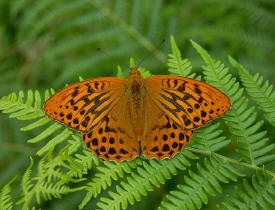 | 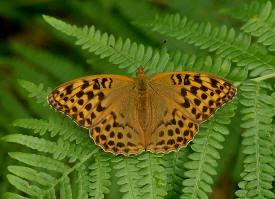 |
| Silver-washed Fritillary Argynnis paphia male | Silver-washed Fritillary Argynnis paphia female |
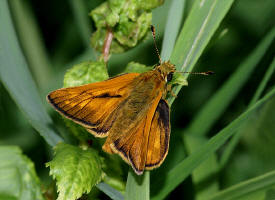 | 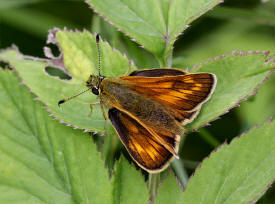 |
| Large Skipper Ochlodes sylvanus male | Large Skipper Ochlodes sylvanus female |
The differences in other species may be more subtle – males generally have more angular wings, longer thinner bodies, brighter colours, and stronger patterns than females of the same species. There are usually obvious differences in behaviour as well – males tend to actively patrol their habitats, or to establish a small territory which they defend against other butterflies.
Females by comparison are far more sedentary, and in the early part of their flight period tend to stay in areas where both adult and larval food sources are present.
What is the most widespread butterfly in the world ?
There are several very widespread species including the Monarch Danaus plexippus, the Plain Tiger Danaus chrysippus, the Long-tailed Blue Lampides boeticus, and the Small White Pieris rapae, all of which are found on at least 3 continents.
The Painted Lady Vanessa cardui however is the most widely distributed butterfly in the world, found in North America from Alaska to Mexico, and south to the Caribbean islands and Venezuela. In the Old World it occurs throughout Europe and temperate Asia, over most of Africa, Madagascar, the Azores, the Canary Islands, the Arab states, and across to the Indian subcontinent and Sri Lanka.
In the Far East it occurs in Thailand, Malaysia, Borneo and Sumatra – and extends it’s range south through the Indonesian islands to Western Australia. The New Zealand Painted Lady Vanessa kershawi is also regarded by some taxonomists to be a sub-species of cardui.
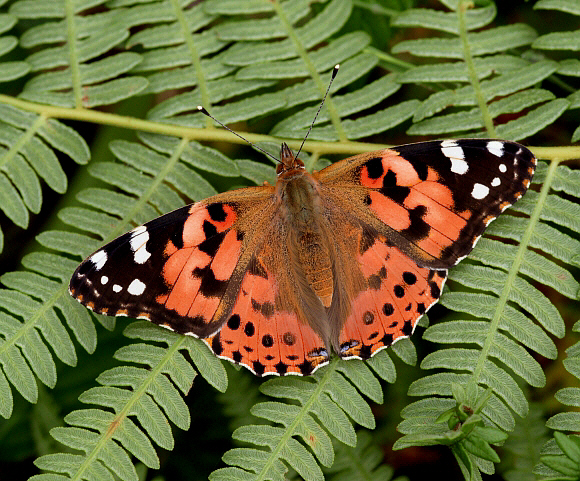 Painted Lady Vanessa cardui – Adrian Hoskins
Painted Lady Vanessa cardui – Adrian Hoskins
The cosmopolitan distribution of the Painted Lady is caused by a combination of it’s very strong migratory behaviour and polyphagous nature – in Britain its caterpillars feed almost exclusively on thistles, but elsewhere they utilise a vast range of foodplants amongst the Compositae, Malvaceae, Boraginaceae, Hydrophyllaceea, Ulmaceae, Rutaceae, Chenopodiaceae, Convolvulaceae, Labiatae, Plantaginaceae, Leguminosae, Urticaceae, Verbenaceae, Cucurbitaceae, Cruciferae, Umbelliferae, Rosaceae, Rhamnaceae, and even one or two grasses!
Which is the largest butterfly in the world ?
The female of the Alexandra Birdwing Ornithoptera alexandrae, found in Papua New Guinea has a wingspan of about 30cms ( 12″ ). The largest butterflies in South America are the Owl butterfly Caligo idomeneus ( 14cms ), and Morpho helena, the iridescent blue male reaching 13cms, and the orange and brown female 15cms. In Africa the largest species is Druryeia antimachus at 17cms.
 Alexandra’s Birdwing Ornithoptera alexandrae, Papua New Guinea
Alexandra’s Birdwing Ornithoptera alexandrae, Papua New Guinea
….and the smallest ?
At the opposite extreme are the tiny Lycaenids Itylus titicaca from Bolivia and Chilades miniscula from Madagascar. The tiniest of them all however is a dull brown Lycaenid Micropsyche ariana, found only in Afghanistan, which measures just 8mm across the wings.
….and the largest moth ?
The largest moth in the world, in terms of wingspan ( measured across forewing at widest point ) is the White Witch Thysania agrippina from South America, which measures as much as 32cms across the wings. It is generally accepted however that the title of largest moth should go to the Giant Atlas moth Attacus atlas. The latter has a slightly smaller wingspan at 30cms, but a greater surface area.
The Giant Atlas moth is a common species across much of tropical Asia.
 Giant Atlas moth Attacus atlas, West Malaysia – Gan Cheong Weei
Giant Atlas moth Attacus atlas, West Malaysia – Gan Cheong Weei
Why are tropical butterflies and moths so big ?
Insects are cold blooded, so in cooler climates caterpillars grow slowly and are only able to produce one or two generations of small or medium sized butterflies or moths per year.
In hot climates they can feed almost continually and grow much more rapidly, so tropical species have been able to evolve to produce much larger caterpillars, resulting in larger adults.
There are limits to the maximum size a species can attain however. The limitations of the insect respiratory system make larger bodies less efficient. Consequently large butterflies and moths tend to react and fly more slowly than their smaller counterparts, and are easy prey for birds.
Note also that not all tropical Lepidoptera are large – there are many very small species. These are the result of an alternative strategy whereby many species produce several generations of small insects per year, rather than a single generation of large ones.
Which country has the most butterfly species ?
Peru has over 3,700 butterfly species – more than any other country and equal to about 20% of the world total. The butterflies of Peru however are still vastly under-recorded, and it is estimated that as many as 4,200 will eventually be discovered.
The highest known concentration of species is at Pakitza, an area of about 4000 hectares within Manu national park. Over 1,300 species have so far been recorded at Pakitza.
The great diversity and abundance of butterflies in Peru is partly due to the extraordinary range of climatic conditions and vast diversity of habitats. Together these create a vast array of ecological niches in which species can exist and evolve.
Not far behind Peru are Brazil, Colombia and Ecuador, each of which have about 3,200 species. In all of Central and South America there are about 7,500 species, compared to about 3,600 for the whole of Africa.

